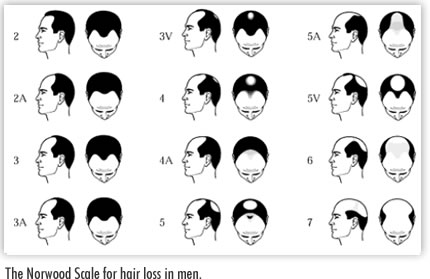Hair Loss in Men
About Hair Loss in Men
Hair Loss is often attributed to Androgenetic Alopecia. However, hair loss can also be attributed to genetic characteristics.

Androgenetic Alopecia
“Andro” refers to the androgens Testosterone and Dihydortestrone (DHT). Testosterone is converted to DHT by the enzyme, 5¤ -reductase. Once this happens, the DHT can then enter the hair cells and interact with the nucleus of the cell affecting the hair growth.
Finasteride (Propecia®) acts by blocking this enzyme, which prevents the formation of DHT. Receptors exist on cells that bind androgens, and these receptors have the greatest affinity for DHT. This is followed by testosterone, estrogen, and progesterone.
After binding to the receptor, DHT goes into the cell and interacts with the nucleus of the cell, altering the production of protein by the DNA in the nucleus of the cell. Ultimately, growth of the hair follicle ceases.
Genetic Hair Loss
Genetic hair loss refers to the fact that a particular genetic characteristic is needed in order for this hair loss scenario to happen. This is why some men lose hair and others don’t. A new test can reveal if you have this characteristic, and thus tell if you are at risk for androgenetic alopecia.
Additional Information
Hair loss in men is generally limited to the top and crown of the head. While most men will lose some hair in their lives, some will lose more than others, and some will lose it earlier in life. As this can be quite traumatic for some men, several excellent options are available for treatment.
